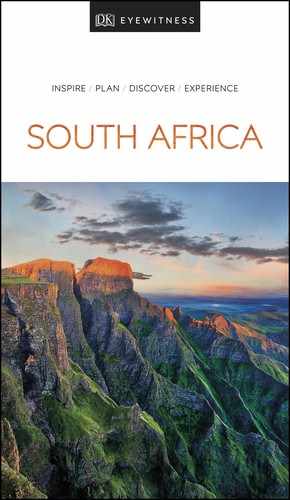Experience More
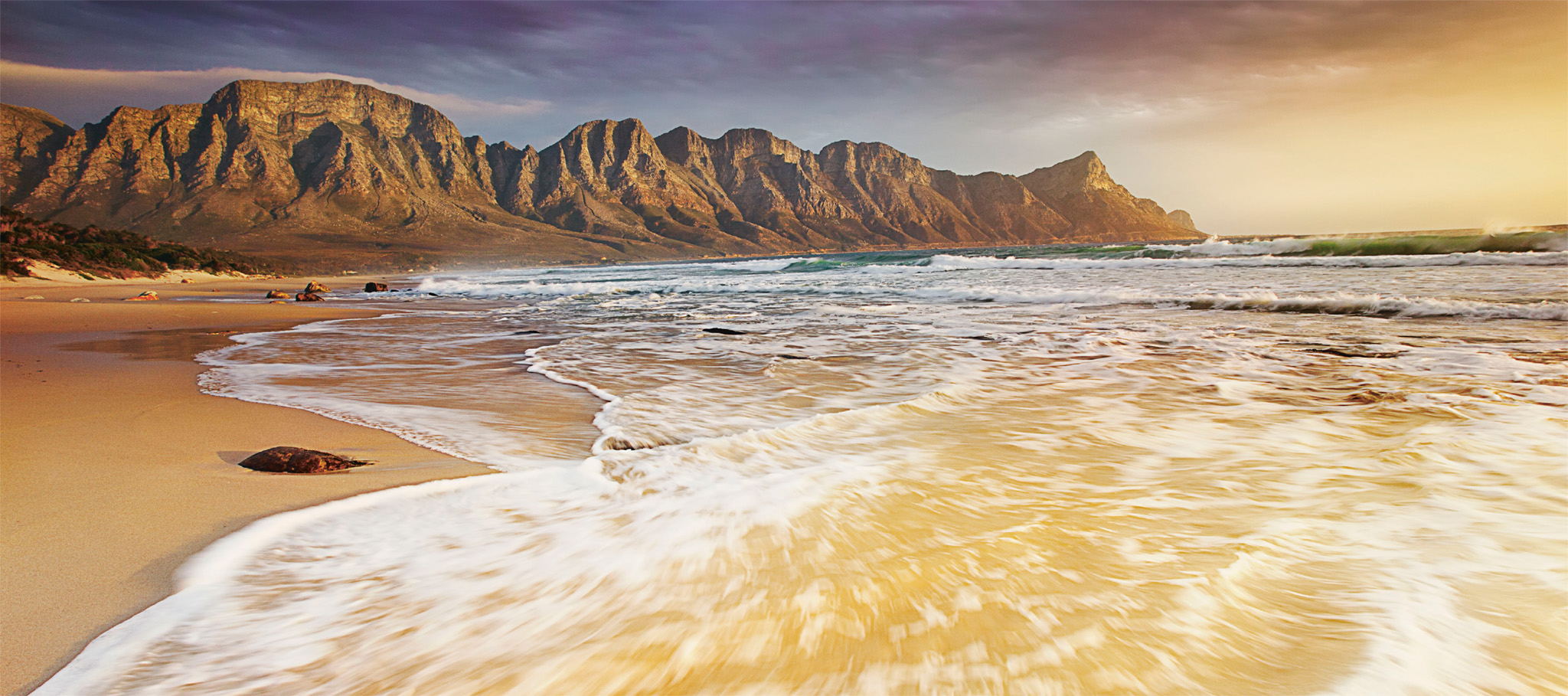
t A deserted bay in Kleinmond, ringed by the dramatic Kogelberg Mountain Range
Surrounding Kleinmond, the stony hills with their thin green veneer of fynbos scrub once harboured small bands of Khoi and runaway slaves. In the 1920s, Kleinmond, nestled at the foot of the Palmietberg, was a fishing settlement; today it is a holiday spot where rock angling for kabeljou (kob) and fishing for yellowtail and tunny are popular pastimes. Kleinmond Lagoon, where the Palmiet River reaches the sea, offers safe swimming and canoeing. Visitors can enjoy beautiful sea and mountain views from a well-planned network of hiking trails in the Kogelberg Nature Reserve, and maybe even glimpse some of the shy gazelles such as klipspringers, as well as the grysbok and steenbok that inhabit the coastal fynbos and the mountain’s lower slopes.
"
Kogelberg Nature Reserve
⌂ Off R44, 8 km (5 miles) W of Kleinmond § 087 288 0499 # 7:30am–4pm daily

Hidden Gem
Salmonsdam Nature Reserve
Wildlife fans shouldn’t miss this pretty reserve to the east of Kleinmond; bontebok, grey rhebok, klipspringer, the Cape rockjumper and king proteas might all be spotted along a trio of walking trails.
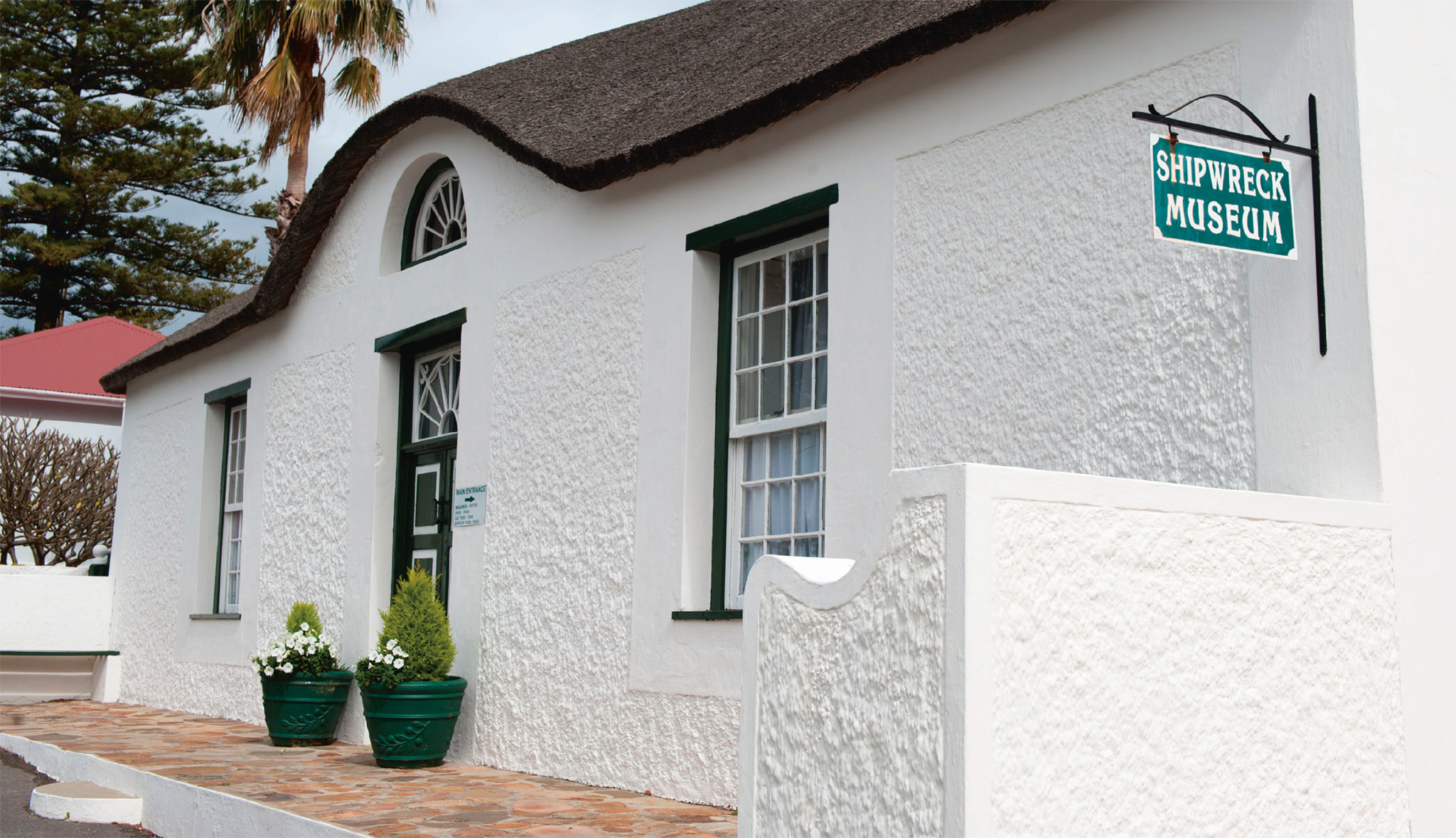
t The intriguing Shipwreck Museum in Bredasdorp
Bredasdorp lies in a region of undulating barley fields and sheep pasture. The town is a centre for the wool industry, but serves mainly as an access route to Cape Agulhas and Arniston (via the R319 and R316 respectively).
The town’s most interesting feature is the Shipwreck Museum, which pays tribute to the southern coast’s tragic history. This treacherous length of coastline has been labelled the “graveyard of ships” as its rocky reefs, gale-force winds and powerful currents make it one of the most dangerous areas to sail through in the world. Since 1552, more than 130 ships have foundered here, an average of one wreck per kilometre of coast.
The museum was officially opened in April 1975 and is housed in an old rectory and church hall, both of which have been declared national monuments. The rectory, built in 1845, contains artifacts from the many shipwrecks that occurred along this capricious stretch of coastline. The salvaged wood, as well as ships’ decor, frequently appear in door and window frames and in the ceiling rafters.
The museum itself is full of shipwrecked figureheads, anchors, old bottles and coins. The beautiful marble-topped washstand in the bedroom was salvaged from the Queen of the Thames, which sank in 1871, while the medicine chest came from the Clan MacGregor, which was shipwrecked in 1902.
The church hall, dating back to 1864, is now called the Shipwreck Hall. Its rather gloomy interior is a suitable environment for the interesting and diverse relics displayed in glass cases, all of which were recovered from major local shipwrecks.
The best time to visit Bredasdorp’s Heuningberg Nature Reserve is from mid-September to mid-October, when the countryside is bathed in colourful blooms. It is home to a number of South African endemic plants and of these, the Bredasdorp lily (Cyrtanthus guthriea) is found only on the Heuningberg Mountain.
"
Shipwreck Museum
⌂ Independent St § 028 424 1240 # 9am–4:45pm Mon–Fri, 9am– 2:45pm Sat, 10:30am–12:30pm Sun ¢ Good Fri, 25 Dec, 1 Jan
Did You Know?
Bredasdorp was named after its founder, Michiel van Breda, the first mayor of Cape Town.
EXPERIENCE Hermanus and the Overberg
|
Stay Oudebosch Eco Cabins An ideal retreat for nature lovers, the five glass-fronted wooden cabins in this scenic reserve all have two bedrooms, and a spacious well-equipped kitchen, lounge and dining room. Two of the cabins also come with wheelchair access. ⌂ Kogelberg Nature Reserve ∑ capenature.co.za Bredasdorp Country Manor Moulded in the image of its welcoming live-in owner, this small but sumptuous bed-and-breakfast has a tranquil French country feel, a lovely swimming pool, and a great location for exploring downtown Bredasdorp on foot and making driving excursions further afield. ⌂ 9 Kloof St, Bredasdorp ∑ bredasdorpcountrymanor.co.za |
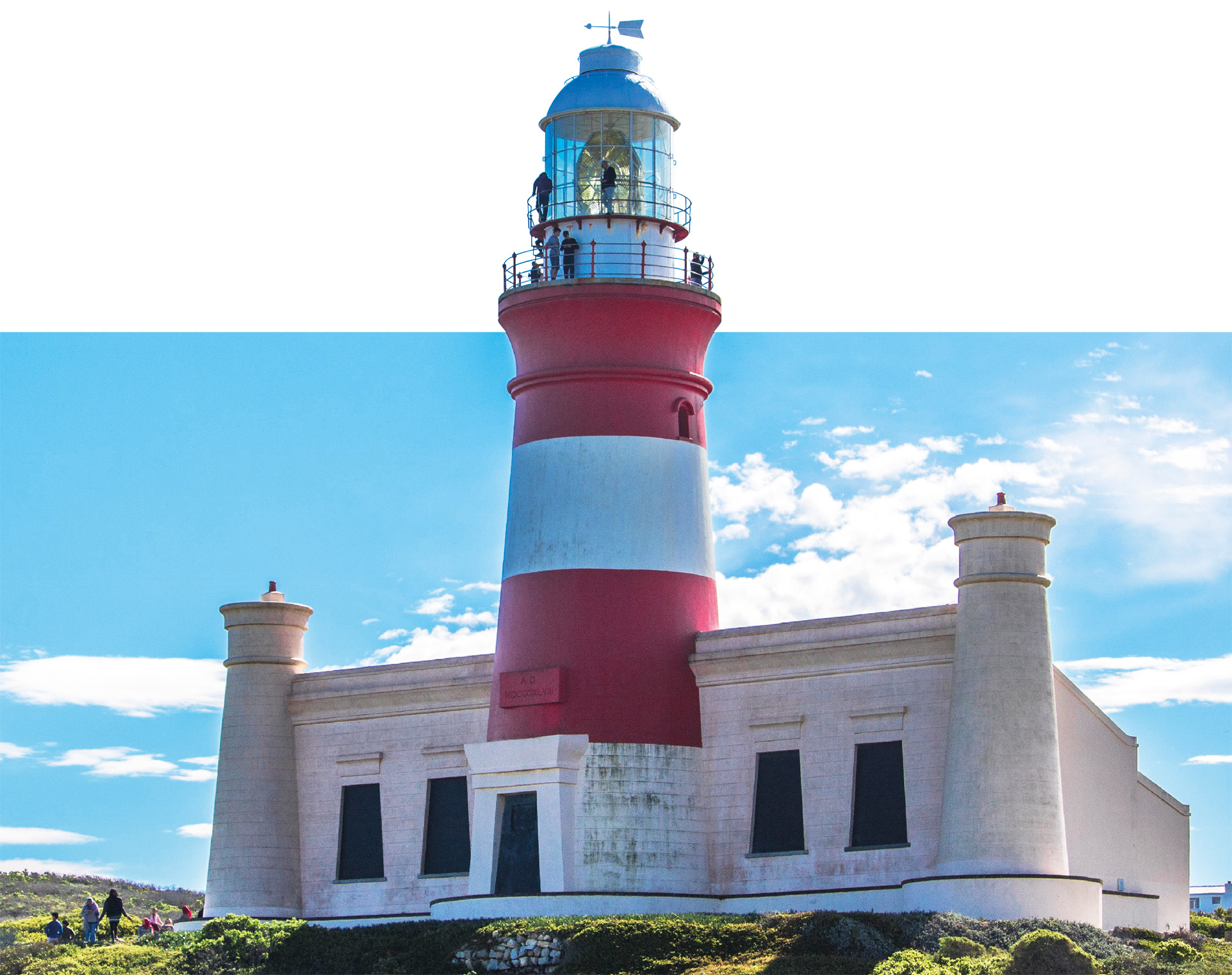
t The brightly striped tower of Cape Agulhas Lighthouse
Cape Agulhas was named by early Portuguese navigators – the first to round Africa in the 15th century. At the southernmost point of their journey, the sailors noticed that their compass needles were unaffected by magnetic deviation, pointing true north instead. They called this point the “Cape of Needles”.
At this promontory, where the tip of the African continental shelf disappears quietly into the sea to form what is known as the Agulhas Bank, the Atlantic and Indian oceans merge. The only physical evidence of this convergence is a simple stone cairn.
This is one of the world’s most treacherous stretches of coast. The often-turbulent waters are shallow, rock-strewn and subject to heavy swells and currents. This is the graveyard of more than 250 once-proud vessels, including the Japanese trawler Meisho Maru 38, whose rusting wreck can be seen 2 km (1 mile) west of the Cape Agulhas Lighthouse. The lighthouse, whose design is based on the ancient Pharos Lighthouse of Alexandria in Egypt, was built in 1848. After the Green Point lighthouse in Cape Town, it is the oldest working lighthouse in southern Africa. It fell into disuse, but was restored and reopened in 1988 – today, its lamp is visible for 30 nautical miles. There are 71 steps to the top of the tower, which affords superb views of the coast and seascape.
The area around the southernmost tip of Africa is now part of the Agulhas National Park.
"
Cape Agulhas Lighthouse
⌂ Lighthouse St § 028 435 7185 # 9am–5pm daily

t Spectacular colours inside the yawning Waenhuiskrans cave, located close to Arniston
Arniston’s name originates from the British vessel Arniston, which was wrecked east of the settlement in May 1815. Tragically, of the 378 soldiers on board, only six survived. The little fishing settlement is located some 24 km (15 miles) southeast of Bredasdorp, and is characterized by its turquoise waters. The locals refer to Arniston as Waenhuiskrans (wagonhouse cliff), after a large nearby cave that can accommodate several fully spanned ox wagons. The cave is accessible only at low tide, however, and visitors should be aware of freak waves washing over the slippery rocks.
Kassiesbaai is a cluster of rough-plastered and thatched fishermen’s cottages. This little village lies to the north of Arniston, close to undulating white sand dunes. Further to the south lies Roman Beach, with its gently sloping seabed, rock pools and caves. Further from here is a windy, wild rocky point that attracts many hopeful anglers.
EXPERIENCE Hermanus and the Overberg
|
stay Agulhas Ocean House Five artfully decorated rooms grace this owner-managed guesthouse offering panoramic views at the southern tip of Africa. ⌂ 4 Main Rd, Agulhas ∑ agulhasoceanhouse.co.za Buçaco Sud This Provencal-style guesthouse is set against the slopes of the Kogelberg, and offers sweeping sea views, a swimming pool and cosy fireplaces for winter warmth. ⌂ Clarence Dr, Betty’s Bay ∑ bucacosud.co.za |
The name Gansbaai (Bay of Geese) originates from the flocks of Egyptian geese that used to breed here.
Gansbaai is renowned for the tragedy of HMS Birkenhead. In February 1852, this ship hit a rock off Danger Point, 9 km (6 miles) away, and sank with 445 men – all the women and children were saved. To this day, the phrase “Birkenhead Drill” describes the custom of favouring women and children in crisis situations.
From Gansbaai there are several boat trips to Dyer Island, where you can watch great white sharks feed on the seals that breed on nearby Geyser Island. This area is also home to large numbers of African penguins, another food source for the great whites that gather here. Nicknamed “Shark Alley”, the channel between the islands and the mainland is a popular destination for shark-diving.

Hidden Gem
Elim Mission
Established in 1824, this former Moravian mission, inland of Cape Agulhas, is noted for its charming whitewashed cottages, the craftsmanship of its thatchers, and the fine Sauvignon Blanc and Shiraz produced in surrounding winelands.
This seaside village, named after Betty Youlden, daughter of a property developer who lived here in the 1900s, is a popular weekend retreat. Holiday cottages are scattered throughout the dunes, while the beach offers tremendous views across False Bay.
Of significance is the Harold Porter National Botanical Garden, which rises behind Betty’s Bay. Porter, a local businessman, bought this tract of land in 1938 to preserve the rich fynbos vegetation. More than 1,600 species of ericas, proteas and watsonias attract sugarbirds and sunbirds. There is also a penguin reserve at Stoney Point (open daily).
" - =
Harold Porter National Botanical Garden
⌂ Cnr Clarence Dr and Broadwith rds § 028 272 9311 # 8am–4:30pm Mon–Fri, 8am–5pm Sat & Sun
EXPERIENCE Hermanus and the Overberg
|
eat & Stay The Old Gaol Local dishes rule at this rustic eatery. The speciality is roosterkoek, a delicious filled bread. ⌂ 8A Voortrek St, Swellendam ∑ oldgaolrestaurant.co.za The Hideaway This sweet Victorian-era B&B offers an indoor pool, and legendary breakfasts. ⌂ 10 Hermanus Steyn St, Swellendam ∑ hideawaybb.co.za De Kloof Luxury Estate This five-star hotel sits in vast gardens. There’s a koi pond, as well as a pool and cigar lounge. ⌂ 8 Weltevrede St, Swellendam ∑ dekloof.co.za |
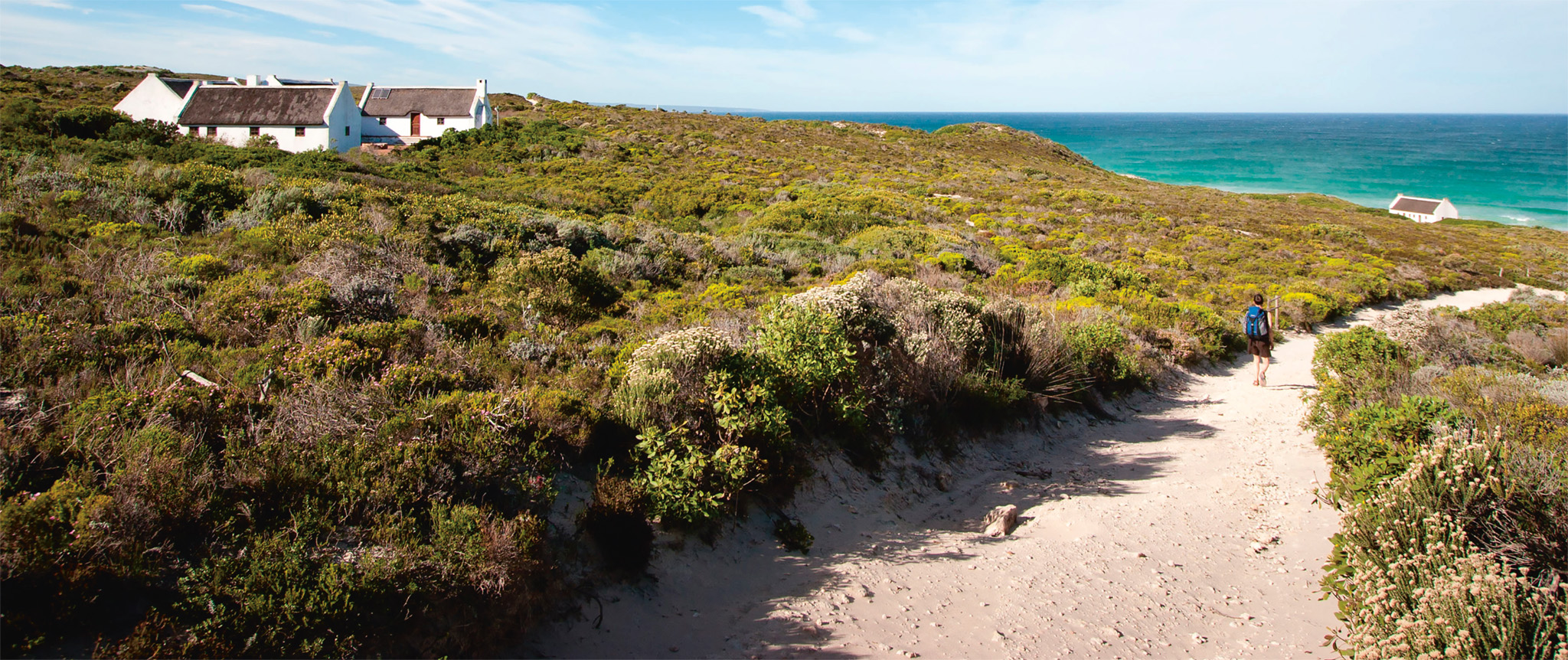
t A path cutting through the terrain of De Hoop Nature Reserve, down to the ocean
This reserve encompasses a 50-km (31-mile) stretch of coastline, weathered limestone cliffs and spectacular sand dunes, some of which tower as high as 90 m (295 ft). De Hoop’s main attraction is a 14-km (9-mile) wetland that is home to 12 of South Africa’s 16 waterfowl species.
Thousands of red-knobbed coot, yellow-billed duck and Cape shoveller, as well as Egyptian geese, can be seen here, although populations do fluctuate with the water level of the marshland. The bird-watching is best between the months of September and April, when migrant flocks of Palaearctic waders arrive. Of the 13 species that have been recorded, visitors may expect to see ringed plover, wood and curlew sandpiper, greenshank and little stint.
The rich variety of fynbos species includes the endemic Bredasdorp sugarbush (Protea obtusfolia), stinkleaf sugarbush (Protea susannae) and pincushion protea (Leucospermum oliefolium).
Wildlife species to look out for include the rare Cape mountain zebra and bontebok, eland, grey rhebok, baboons and the yellow mongoose.
A mountain bike trail traverses the Potberg section of the reserve, which contains a breeding colony of the rare Cape vulture. Comfortable campsites and cottages are available and overnight visitors can experience the spectacular southern night sky almost free of light pollution. De Hoop is also the start of the popular 5-day Whale Trail hike along the coast, which must be booked well in advance.

t Interior of the Drostdy colonial museum in Swellendam
Nestling in the shadow of the Langeberg Mountains, Swellendam is one of South Africa’s most picturesque small towns. It is the country’s third-oldest town, after Cape Town and Stellenbosch, and was founded by the Dutch in 1742 and named after the governor and his wife.
The thatched-roofed and whitewashed Drostdy was built by the Dutch East India Company in 1747 as the seat of the landdrost, or magistrate. It now serves as a museum of Dutch colonial life. Built shortly afterwards, the adjacent Old Gaol was originally a simple, single-storey building, but it was subsequently enlarged to include an enclosed courtyard.
Near the museum is the Ambagswerf (trade yard), which features a smithy and wagonmaker’s shop, a mill and bakery, a tannery and a coppersmith. Also on site is the pretty Mayville Cottage. Built between 1853 and 1855, it represents a transition of architectural styles, using both Cape Dutch and Cape Georgian influences.
Swellendam is renowned for its many fine old buildings. The Oefeningshuis was built in 1838 as a school for freed slaves. An interesting feature of the building is the clock designed for the illiterate: when the time painted on the sculpted clock face matches that on the real clock below, then it is time for worship. Also noteworthy are the Dutch Reformed Church, the wrought-iron balconies of the 19th-century Buirski & Co shop and the elegant Auld House.
" -
Drostdy
⌂ 18 Swellengrebel St # 9am–4:45pm Mon–Fri, 10am–3pm Sat & Sun ¢ 1 Jan, Easter, 25 Dec ∑ drostdy.com
The southern outskirts of Swellendam are home to South Africa’s smallest national park, which extends across 28 sq km (11 sq miles) of undulating terrain bounded by the Breede River at the base of the Langeberg Mountains. As its name suggests, the park was set aside as a reserve for the bontebok, and it now hosts around 200 of these endemic antelopes. Other native mammals include Cape mountain zebra, red hartebeest, grey rhebok and Cape grysbok. The park is also highly rewarding for birders, with more than 200 species recorded. Look out for the Denham’s bustard and Agulhas long-billed lark in areas of open cover, and Acacia Pied Barbet, southern boubou and swee waxbill in thickets along the river and around the park’s campsite. Because no dangerous wildlife is present in the park, the game-viewing roads are supplemented by three self-guided walking trails.
EXPERIENCE Hermanus and the Overberg
SAVING THE bontebok
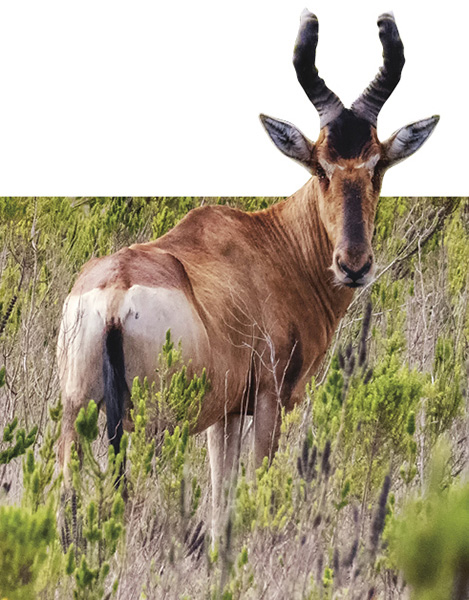
Once plentiful, South Africa’s bontebok were driven close to extinction due to hunting, disease and food competition with livestock. Bontebok National Park was established in 1931 and moved to its present location in 1960, since when the bontebok has thrived. Today, it has been reclassified from Endangered to Least Concern.
